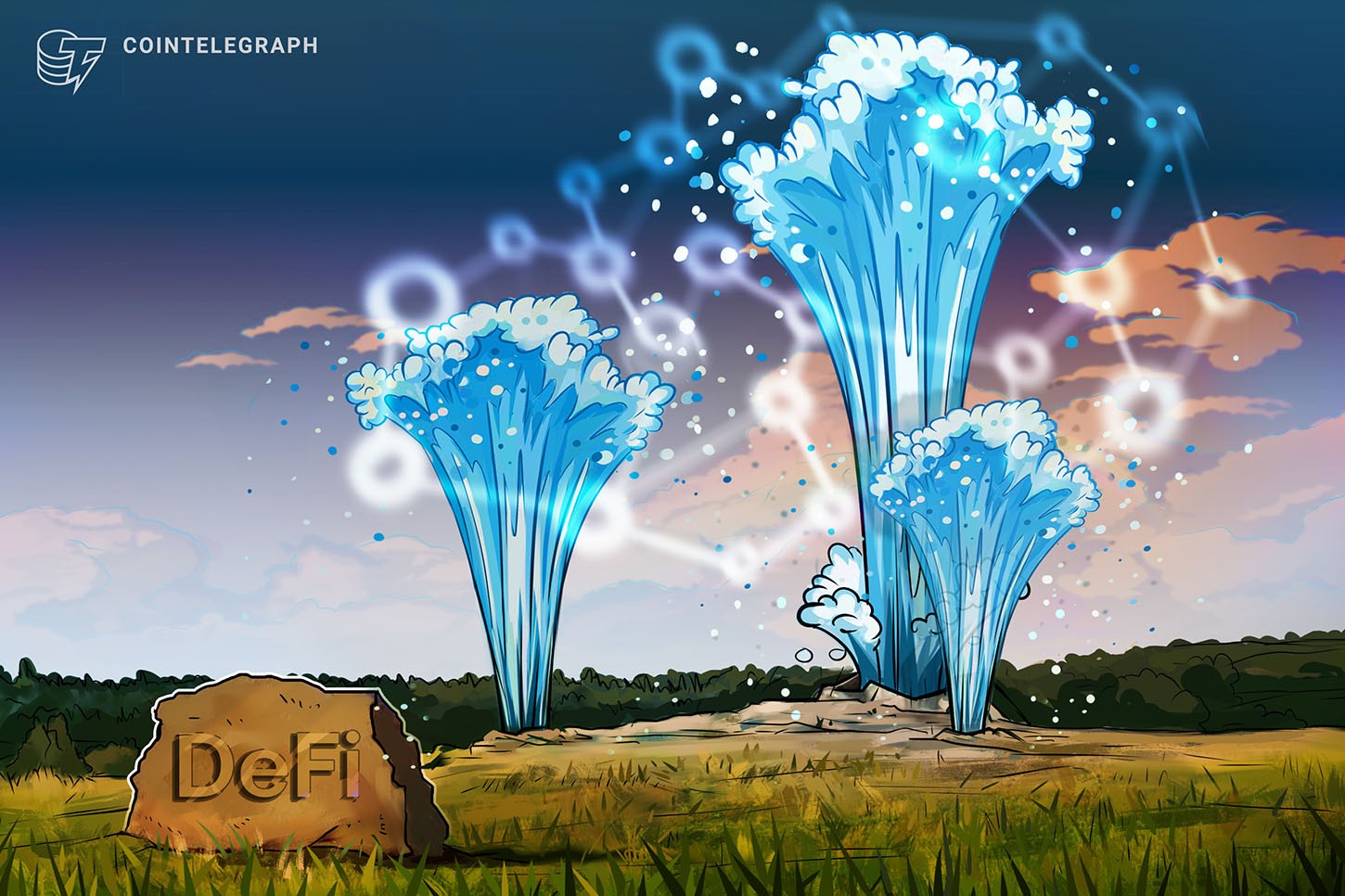Yearn.finance, an automated DeFi yield-farming protocol, has recently launched the latest yvault strategy, yETH. yVault strategies are a set of predefined actions that allow users to deposit funds and have them automatically sent to liquidity pools where high-yield interest and additional token rewards are earned.
The yETH vault was launched on September 2, along with the yWETH vault and a few other updates. The yWETH vault is equivalent to the yETH vault but uses wrapped ETH, an ERC-20 token pegged and backed by ETH.
According to a recent client newsletter by Delphi Digital, the yETH vault strategy has four major steps. First Ether (ETH) is deposited, then it is used as collateral to acquire DAI through MakerDAO at a 200% collateralization rate. Interest is earned and the DAI is sent to Curve Finance, a stablecoin liquidity protocol.
The DAI is then locked and interest (from the trading fees at the Curve DEX) and extra CRV tokens are received. CRV is then sold for Ether which is reallocated back to the yETH vault.
At the time of writing, the yVault strategy has an interest rate of 90% and a 0.5% withdrawal fee which is then distributed to YFI token holders.
Yearn.Finance and the future of DeFi
The yVault strategies currently available on Yearn.Finance are achieving massing yields for their holders and in the case of yETH, it is bringing a bullish outlook for holders of MakerDAO’s MKR, Ether, and of course for YFI. This is because token holders receive rewards for holding YFI from the 0.5% withdrawal fees.
Given the high yield of the vault, yETH currently has 345,120 Ether ($139 million) committed to the vault just one day after launching and analysts expect that this figure will increase.
While this new vault system is risky for investors, the reward system for developing new strategies is meant to incentivize developers to create rock solid code and the protocols are expected to undergo multiple audits. In the report, Delphi Digital also pointed out a few reasons for the success of Yearn Finance, stating that:
“It’s hard to give just one reason why our team is so excited about YFI. There is clearly a product-market. It’s easy to use, especially with the efficiency it achieves for fees. The yields are attractive and it generates revenues for token holders without dilution.”
Is DeFi becoming too speculative?
In the announcement of yETH and wETH’s vault tweet, Yearn.Finance warned that there is high risk associated with the vaults given that they are “debt based vaults and carry extremely high risk”.
The risk referred to here is a liquidation risk which means that if Ether drops to a certain price, user’s Ether positions will be liquidated. This is done to ensure the DAI’s peg to the USD, since DAI is collateralized by ETH at a 200% rate.
Currently, the collateralization ratio limit is at 150%, meaning there’s a very high risk of losing all of the funds deposited in these vaults.
Moreover, there are general risks and issues associated with the current DeFi ecosystem, including the high gas fees required to interact with smart contracts and the fact that the yETH vault interacts with multiple smart contracts, adding several layers of risk to the process.
As high risk investment in DeFi continues to outdo itself, the hype surrounding the industry and the price rallies seen in the space point to a possible bubble in the making.
When asked about the hype surrounding DeFi and how it may compare to the ICO hype of 2017, Lanre Ige, research associate at 21Shares, told Cointelegraph that there may still be room for growth. He stated:
“While it's difficult to compare given that the current cycle is still magnitudes smaller than the former, the big difference thus far has been that current valuations have not been driven by large inflows of new money — even though there is undoubtedly more sustained, long-term institutional interest than there was in 2017.”


